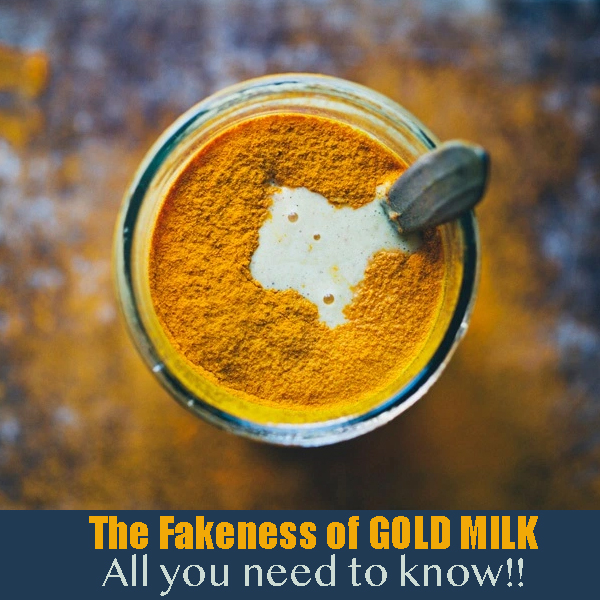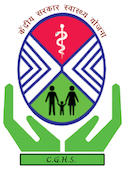Diabetic retinopathy is a condition which leads to the blindness for most of the diabetic people. In this condition, it becomes important for every patient of diabetes to understand the condition and its severity. Diabetes is something which complicates the life through its complications. Ayurveda is the hope for the diabetic retinopathy patients. Ayurveda can help you to preserve your vision completely. And at least Ayurveda won’t let the condition worsen further.
Diabetic retinopathy basically refers to retinal changes seen in patients with diabetes mellitus. With an increase in the life expectancy of diabetes, the incidence of diabetic retinopathy has increased. Diabetic retinopathy is also the primary cause of blindness.
What is Diabetic Retinopathy
Before knowing about the diabetic retinopathy, we need to know a bit about Retina. Retina is a thin layer. This layer helps to analyze the visulas, which come through lens. This layer is the link between the rest of the eye and optic nerves.
There are millions of the blood vessels in this layer, these blood vessels carry the blood to this layer and provides the nourishment to this layer. Because of the importance of this layer, nature helps it to be nourished properly.
This is a known fact that diabetes causes problem with the microvasculature of the body. The small blood arterial ends keep on diminishing and weakening in case of diabetes. Hence these small capillaries of the eye, located under the retina also get affected with this process.
Diabetic retinopathy involves abnormal growth of blood vessels in the retina leading to many other complications like:
- Vitreous haemorrhage: The newly formed blood vessels sometimes bleed via leakage. If the leakage is less, then it will appear as few spots, but if it is high, then it blocks the entire cavity and can cause permanent vision loss.
- Retinal detachment: The bleeding due to microangiopathy from the small blood vessels leads to accumulation of the blood behind the retina. Therefore a pressure builds up in the region. Because of the same pressure, process of retinal detachment starts.
- Blindness: Ultimately, diabetic retinopathy and glaucoma lead to blindness.
- Glaucoma: new blood vessels that grow in the front part of the eye hamper normal flow of fluid and cause pressure on optic nerves. The pressure created on optic nerves damage the eye.
Facts about Diabetic Retinopathy
- Diabetic Retinopathy is the primary cause of blindness in India.
- About 52.2% male diabetic patients who smokes regularly developed diabetic retinopathy.
- Diabetic Retinopathy patients face several difficulties while doing daily activities like reading, going to work, driving, etc.
- To rule out Diabetic Retinopathy, it is essential to get a check-up of vision at least once annually.
- During pregnancy, it is vital to visit a doctor in the first trimester and have a complete eye check-up.
- Diabetic Retinopathy is completely preventable through control of diabetes.
- Ayurveda gives promising results in case of microangiopathies. Therefore you can restore your vision to normal through Ayurveda.
- Smoking, high insulin, low exercise, Hypertension is some of the risk factors for diabetic retinopathy.
Signs and Symptoms of Diabetic Retinopathy
Initial stages of Diabetic Retinopathy can occur without showing symptoms and causing any pain. In later stages, signs and Symptoms of Diabetic Retinopathy include:
- Vision loss: Severe damage of blood vessels and leakage of blood results in blocking cavities of the eye, ultimately losing vision.
- Blurred, Fluctuating & Impaired coloured vision: Due to the rupture of blood vessels and their impairment, the coloured vision is not clear and proper.
- Micro aneurysms: These are the small red dots in the superficial retinal layers due to pericytes loss.
- Dot and blot haemorrhages: When blood vessels rupture in deeper layers of the eye, then it seems like dot and blots in the eye.
- Flame shaped haemorrhages: These are the haemorrhages which mostly occur in the superficial nerve fibre layer.
- Retinal edema and hard exudates: Leakage of serum proteins, lipids and proteins from vessels caused by the breakdown of the blood-retina barrier.
- Cotton wool spots: These are again visible on retina. These are patches which looks alike cotton wool. Some red dots surround these patches. These appear because of the loss of blood supply to the nerve fibers in the retina.
- Intraretinal microvascular abnormalities: These appear are mostly on outlines of the retina. The process of damage of capillaries keeps on continue, so is their regeneration. In this process of damage and recreation these changes appear.
Causes of Diabetic Retinopathy
Alone being diabetic is not the criteria for the problem of the diabetic retinopathy. There are several factors which cause this condition all together. Here are the details-
- Duration of diabetes: It is the most determining factor for diabetic retinopathy. After 10 years, 20% of diabetics develop retinopathy. In 20 years, 90% of diabetics develop retinopathy. After 30 years, 95% of diabetics develop retinopathy. It is the duration of disease after the onset of puberty which acts as a risk factor.
- Age of onset of diabetes: This is applicable on the Juvenile diabetes only. When diabetes occurs in age of 2 years of age in a child. Eventually risk is less for the starting 10 years. But afterwards it increases. But after the start of puberty, the age of onset is not a risk factor.
- Sex: Ratio is more in females than males (4:3).
- Poor metabolic control: Wherever diabetes associates with metabolic syndrome, chances of DR are always on a higher side.
- Heredity: It is generally transmitted as a recessive trait without any sex linkage. The effects of heredity are more on the proliferative retinopathy. It is a developed form of retinopathy in which new and weak blood vessels begin to form on the retina and help restore blood supply.
- Pregnancy: It may accelerate the changes in diabetic retinopathy.
- Hypertension: When associated, may also accentuate the changes in diabetic retinopathy.
- Other risk factors: Includes smoking, obesity, anaemia and hyperlipidemia (blood has too many lipids).
Stages of Diabetic Retinopathy
Diabetic retinopathy has four stages:
- Mild Non-proliferative retinopathy: At this stage, symptoms of balloon-like swelling occur in retina’s tiny blood vessels.
- Moderate Non-proliferative Retinopathy: In this stage, blood vessels that nourish the retina are blocked.
- Severe Non-proliferative retinopathy: In this, many areas of the retina which are responsible for sending signals to the body to help grow new blood vessels for nourishment are deprived of blood supply due to blockage of several blood vessels.
- Proliferative retinopathy: At this stage, the new blood vessels are fragile and abnormal. Blood vessels are triggered by the retina for nourishment. If these blood vessels leak blood, it can lead to severe vision loss and blindness.
How does it occur?
The process of occurance of the diabetic retinopathy occurs due to- increase in the blood sugar levels (Hyperglycemia) and damage to the microvasculature of the retina (microangiopathy).
Hyperglycemia is high levels of sugar, or glucose, in the blood. In uncontrolled diabetes, Mellitus hyperglycemia is the starting point for the development of diabetic retinopathy.
The mechanism by which hyperglycemia produces Microangiopathy includes:
- Cellular damage: Hyperglycemia produces damage to the cells of the retina and endothelial cells. It also results in loss of pericytes and thickening of the basement membrane of capillaries.
- Haematological & biochemical changes: Hyperglycemia plays a significant role in the development of Microangiopathy. It also includes an increase in platelets adhesiveness, blood viscosity and red blood cells deformation.
Microangiopathy is a microvascular disease and is also known as small vessel disease. Microangiopathy affects retinal pre-capillary arterioles, capillaries and venules. It is produced by hyperglycemia is the primary pathology in diabetic retinopathy.
Effects of Microangiopathy producing diabetic retinopathy includes a breakdown of the blood-retinal barrier. Weakened capillary wall leads to retinal edema, haemorrhages and leakages of lipids.
Ayurveda About Diabetic Retinopathy
There is no as such disease according to Ayurveda which directly translates into diabetic retinopathy. Even in the Ashtanga Sangrah and Sushruta, where eye disease have been discussed in detail- no as such reference are available. Few people translate it from modern terminology as- Pramehajanya Timira. We can translate a name. But the pathological understanding is important. And because of the lack of this pathological occurrence, in Ayurvedic terms- we are not able to help patients of DR with Ayurveda.
Ayurveda give freedom to a physician to take decision about a disease according to involvement of the Doshas. Before we make a decision about Dosha in DR, we need to understand some other points.
As per Ayurveda, we need to understand the following points in case of Diabetic retinopathy-
- Low metabolism /Agni Mandya
- Problem with blood vessels /Rakta Pitta and Vata Rakta
These are two major points in context of Diabetic Retinopathy. When we can understand these, obviously we will understand the disease completely.
Low Metabolism / Agni Mandya
The capacity of the body to burn the food for energy production is- metabolism as per Modern Biology. The same we refer as Agni in Ayurveda. Diabetes alone is not responsible for the changes of retinopathy.
Diabetes, itself is a metabolic disorder. In diabetes, majorly the metabolism of sugar impairs along with other things (fats etc.). But when it associates with the dyslipidemia and other conditions, things starts getting worse. And this is point from where complications of diabetes starts appearing dominantly.
Problem with blood vessels /Rakta Pitta and Vata Rakta
Ayurveda talks about two conditions- Vata Rakta and Rakta Pitta. These conditions are important to understand the two major aspects of DR. These major aspects are- infarct (no blood supply to an area) or bleeding from week small arteries.
Vata Rakta is all about the loss of blood supply, here cause might be- blockage of arteries due to cholesterol or even due to inflammation in the walls of the arteries.
Rakta Pitta is about bleeding. When the heat of blood increases, it collects extra water from the surrounding tissues and leads to increased blood volume. Because of this pressure increases in blood vessels and leads to bleeding.
So now we have reference for the disease. The next thing is to find out Doshas.
Doshas involved in Diabetic Retinopathy
Diabetes is a classical condition with Vata imbalance. But this imbalance starts with the Kapha. But here we are discussing a secondary condition. And in this condition, the main problem is the blood. And the Dosha with the Blood is- Pitta.
Therefore we need to be careful about all the Doshas, but mainly we need to work on the pitta dosha. Generally it happens when all three doshas are involved, it causes imbalance of one during the treatment.
Ayurveda Treatment for Diabetic Retinopathy
Now when we have a complete approach about the condition, we can better differentiate the line of treatment according to Ayurveda. There are few important points-
- Controlling the blood sugar
- Balancing the Agni
- Tackling root cause-
- In case of infarcts (Vata Rakta)
- Where bleeding is predominant (Rakta Pitta)
With this three dimensional approach, we can deal better with the condition of Diabetic Retinopathy.
Because in case of diabetic retinopathy, eye is only an organ where complication appears. The eye is on a receiver end. Therefore it is important to treat the condition on the systemic level. The major benefit of treating this condition on systemic level is- a patient can avoid further similar complications of diabetes like- diabetic nephropathy!
This is the reason when we treat the condition of DR, we ensure that we will work on the whole system to ensure complete recovery of your health. Not just the eye.
Ayurveda is the second side of hope!
As soon as we go for Ayurveda treatment of a condition, we just ask- is it curable through Ayurveda? Same is with condition of the Diabetic Retinopathy. And here we go for your question-
How much helpful Ayurveda can be in Diabetic Retinopathy?
Ayurveda can avert any possibilities of “blindness”, for sure. Ayurveda treatment can surely stop the progress of your problem completely. And you can lead a normal life. The vision improves with the patients.
But along with the treatment we always tell a patient to continue the medicines for diabetes whatever one is taking. We just add some Ayurvedic medicines which can help one to control the blood sugar levels and to avoid the complications of the disease.
So if you want to take the treatment of the Diabetic Retinopathy, please come for the consultation after booking the appointment with Vaidya Ji. After your complete analysis, line of treatment will be decided and shared with you.














